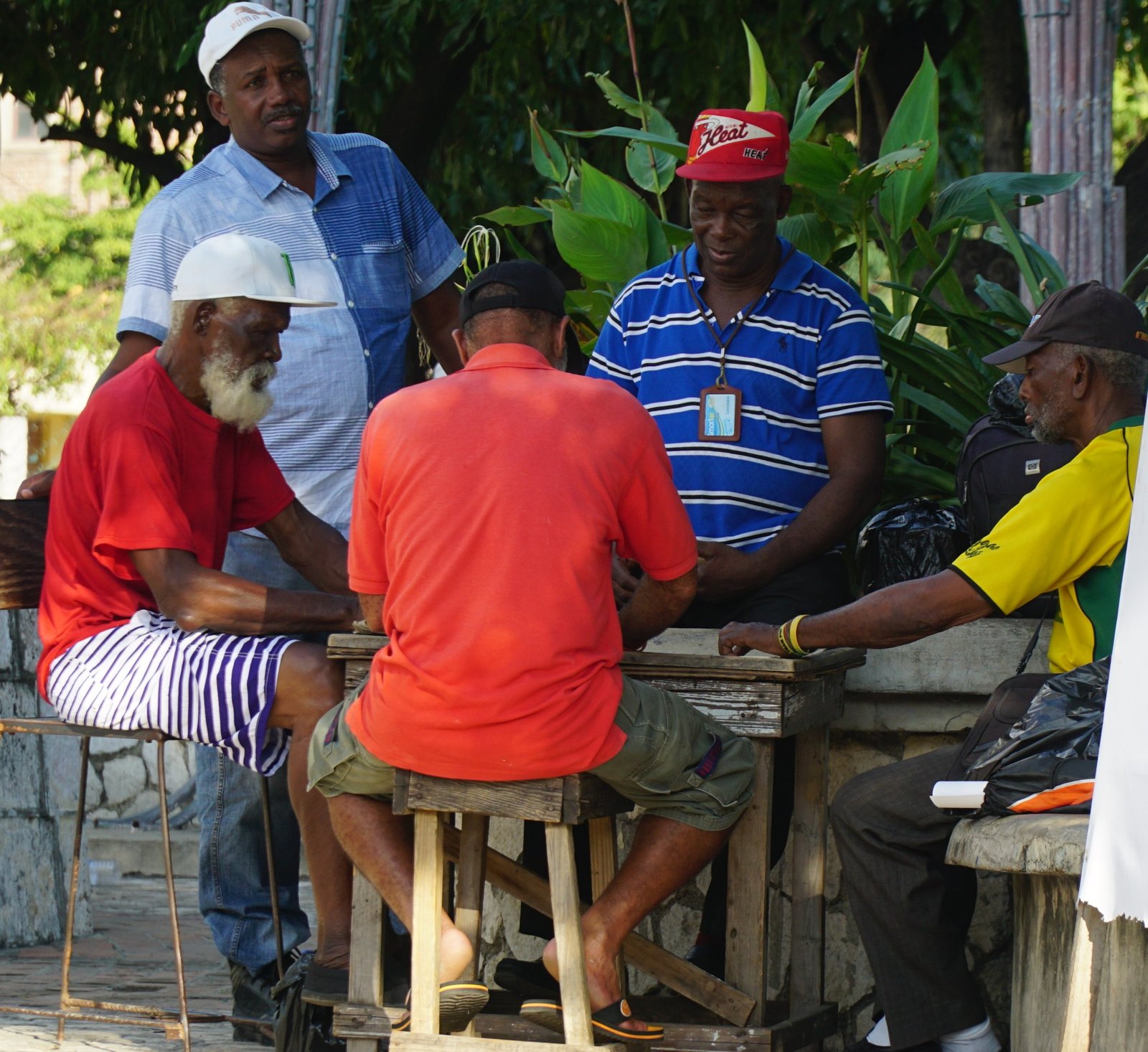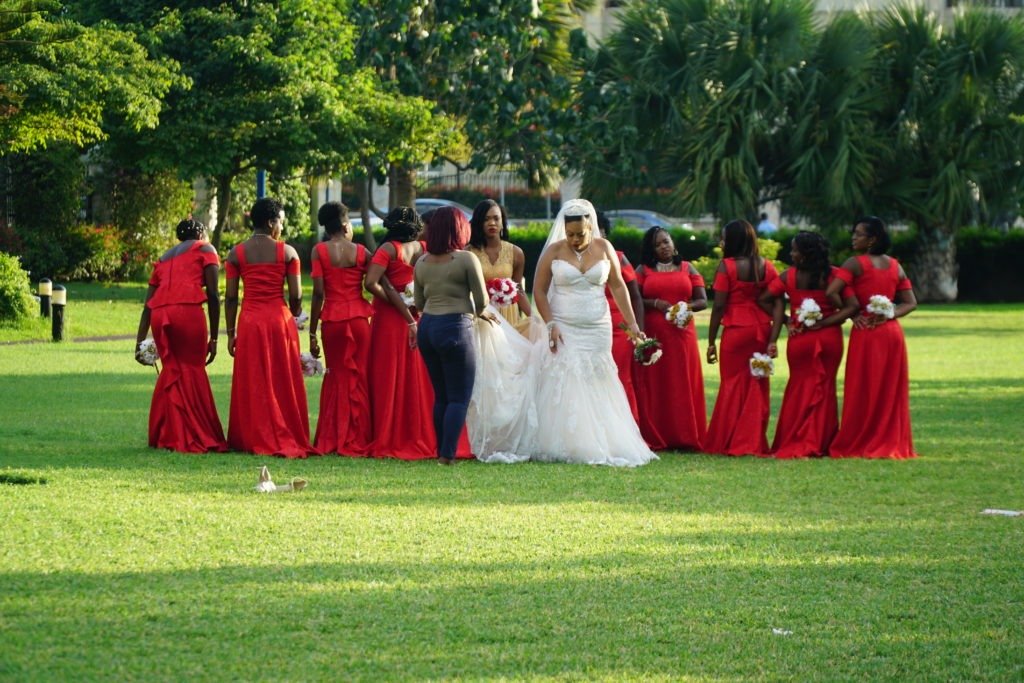Most tourists who visit Jamaica go to one of the BIG 3 - Negril, Montego Bay, and Ocho Rios.
After some research, we decided to skip these places and only took one dip in the sea in Montego Bay on our last day before going to the airport. Although Negril boasts of having one of the most beautiful beaches in the world, the famous 7-mile beach, and Montego Bay and Ocho Rios are known as the other two top beach destinations in Jamaica, we realized pretty early into our Jamaican research that these places are incompatible with our travel goals.
To begin, all these three places are way overdeveloped and Westernized. Local eateries are replaced with international chain restaurants such as McDonald's, Burger King, and Starbucks; all-inclusive and big chain hotels overpower small local guesthouses; and beaches, although inviting and beautiful, are packed with foreigners and not locals. Also, we read about visitors being hassled all the time as locals try hard to sell everything: from cheap souvenirs to sunglasses, from beach towels to weed. As one visitor described, hassling never stops and you are constantly being approached and asked to buy something. We had a somewhat similar experience in Acapulco, Mexico a decade ago when Julia went for a swim and was approached by a small wooden canoe displaying cheap trinkets. The pushy boat operator did everything he could to make a sale to a very puzzled Julia, who in response questioned him on why he thought she had money on her and swam away. While we understand that locals try to make a living and there is nothing wrong with that, we did not want to deal with the touristy side of Jamaica. We wanted something more authentic and so, we decided to venture into the regions that are rarely visited by tourists. We started with the capital of Jamaica, Kingston.

The following is not a coherent story about a funny situation or a thought-provoking episode. It’s a mishmash of experiences during the second day of our random and strange stumble through this city. We learned something new about Jamaica’s music and history, we got close and personal with locals, we were startled by an unsafe situation, and we were laughed at by a taxi driver and a cop within one hour. In the end, it was quite a lot of fun.
A lot is written about how unsafe Kingston is. We are not here to persuade you otherwise. There are definitely some rough parts to this city. And even in safe neighborhoods locals take precautions in the form of security guards, tall fences with barb wire, and bars on the windows. However, we decided that skipping this city solely for safety concerns would be a mistake. The advice we received was that the Down Town (yes, two words) was not safe and best avoided at night, while New Kingston, with all the tourist sights, was relatively safe with measures of precaution. We visited both places during the day. We learned through our own experiences that the advice we received was correct.
We started in New Kingston. The main attraction here is Bob Marley’s house. We went on a one-hour tour led by a young Jamaican guide who proudly told us stories about the most famous Jamaican son. The tour was both interesting and informative. There were some hardcore Bob Marley fans in our group, for whom the visit was akin to visiting the holiest place for a devout religious believer. They knew all songs, names of albums, and some obscure facts from Bob Marley’s biography, sometimes better than the guide himself. We, on the other hand, listened to every bit of trivia with wide eye naivete, neither of us knowing much about his life beyond “No woman, no cry.” Visiting Bob Marley’s house was also a humbling experience for, despite his stardom, the exterior and interior of the house were very modest.
The guide was keeping the tour light and peppered his presentation with well-rehearsed corny jokes. For example, he confused everyone for a second when he pointed to one of the photographs on the wall capturing an image of Bob Marley playing soccer with little kids. The guide pointed to a little kid in the picture and asked, “Do you know who that is?”
“Who?” asked one of the tourists in our group.
“Me!” Everyone gasped. It took us a second to realize that this was definitely a joke. Bob Marley died in 1981, and our guide was barely 20 years old.
Overall, we liked our visit and left Bob Marley’s house with a new appreciation for his life and music, humming: “One love, one heart, let’s get together and feel all right.”


As an avid and devoted art nerd, I could not go to Jamaica without visiting an art museum. The problem was that the National Gallery of Jamaica was in a “bad” Down Town area. We decided to take a taxi to and from the museum.
The National Gallery was completely empty, with no visitors or employees in sight. It took us good 15 minutes to find somebody to let us in. We paid a whopping $800 to get in. I know, 800 Jamaican Dollars is just $4 US, but the receipt did not specify the currency. I kept the "$800" receipt in case anyone ever questions my love of art.
The museum left a very strange impression. In Jamaica, more than 70% of the population is black, and I expected to see a lot of art depicting black people. Yet, I only found it in the modern section of the museum (second half of the XX century through the present). The art dated before that and especially the art of the XIX century, mainly depicted plantation mansions of the Englishmen, as well as verdant Jamaican landscapes with the native population mostly absent from them. The explanation is obvious: art generally reflects life. In a way, this art museum is also a history museum depicting the realities of life in Jamaica in the past and the assigned roles of the Europeans and the enslaved local population.


After visiting the art museum, we thought that we would do an injustice if we just jump into a cab and leave. We decided to stroll the neighborhood to learn a little bit about it. This was a busy Christmas Eve afternoon, the central thoroughfare was lined with shops, and tons of people were doing last-minute shopping. We walked around busy streets, sometimes stepping over various wares and trinkets vendors had displayed right on the sidewalk. Everyone seemed friendly, children were running around, and our nervousness about this “dangerous” area slowly faded into complacency. As we skimmed through various little trinkets to bring home to our friends, Julia realized that we were running very low on cash. She pulled up Google maps on her iPhone and found an ATM just three blocks from where we were standing.
We walked one block down the busy street, turned left, strolled half a block, and suddenly realized that we were alone on a completely empty street consisting mostly of half-crumbled buildings. We could still hear the cheerful rumbling of the busy street behind us and so we pressed on. One block later, with the buildings around us growing more and more decrepit, we came across a single man, sprawled out on a sidewalk. As we stepped off the sidewalk to walk around him, he picked up his head, looked us over with bleary eyes, and exclaimed, “Merry Christmas!”
We smiled and mumbled something of an answer.
“Santa Claus must have brought you here as gifts for me!” he yelled, just as cheerfully.
We immediately quickened our step and stumbled away, glancing back to make sure he wasn’t following us to collect his “gifts”.
A block later, we stood where the ATM should have been. It was another empty street, on the left of us was a mostly crumbled building, in the last stages of demolition. On the right, a beautiful white building and a cheerful sign announcing “Shaare Shalom Synagogue”.
Julia stared at Google Maps. “Hey! It’s the only synagogue in Jamaica!” she announced. “It’s also known as Holy Congregation of the Gates of Peace… Now, let’s get out of here before we die.”
Finally, we made it back to a busy central street and immediately caught a taxi to take us to Emancipation Park. The taxi driver examined us quizzically.
“You been to Jamaica before?” he asked.
“It’s our first time,” I said. “Second day in Jamaica.”
“Second day in Jamaica and you are here?!” The driver roared in laughter. “You must be crazy!”
We didn’t try to argue. This man clearly knew what he was talking about. He dropped us off at the park and drove away, still laughing at us.


Before we entered the park, I decided to celebrate our escape from Down Town by having a beer. There were sellers at the entrance who were selling cold drinks out of coolers, including bottles of local beer, and so I bought one. As we strolled among pretty lawns and manicured bushes, the tallest cop I’ve ever seen, possibly approaching seven feet, suddenly changed his trajectory and marched directly to us. He stopped and stared down at our confused faces.
“Do you realize you are breaking the law?” he asked, his voice booming above our heads.
I looked at the beer in my hand and strained my neck to look back up at him. Is public consumption of alcohol in the park not allowed? The vendors were selling it right outside the park… Before I could mount my defense, he suddenly grinned.
“The bottle. You are not allowed to have glass bottles in the park. Go back to the vendor and ask for a plastic cup.” He directed us back to the park entrance, politely smiled, and strolled away, each step seemingly two meters wide.
I can’t even blame him, messing with tourists has to be the favorite part of his day.


The park turned out to be a popular place for the newlyweds and we saw five or six weddings that evening. The main attraction is located at its entrance -- a large statue called Redemption Song, named after Bob Marley’s hit song. The sculpture consists of a giant naked black man and woman gazing up in the sky, symbolizing their rise over the atrocities and horrors of slavery. The sculpture was heavily criticized when was installed in 2003, primarily for the couple’s nakedness. Local newspapers were bombarded with readers’ letters expressing their outrage at the couple’s indecency. The statue also had its defenders. As one of the commentators wrote in a local newspaper: “Just because Europe's classical statues had small penises, that doesn't mean Jamaica must follow suit.”
And that was a fitting end to our strange and exhilarating day – a bit of Jamaican humor shining through an uncomfortable subject, whether it be the horror of past slavery or today’s existence of violent crime. We started our trip knowing that we didn’t want to see touristy and over-commercialized Jamaica and we ended up learning the history of oppression through art and music, experiencing the reality of poverty and policing in our walks through dangerous and safe neighborhoods. There were definitely a few times when it felt like we got more than we gambled for, but in the end, all of that makes for great stories to remember.


